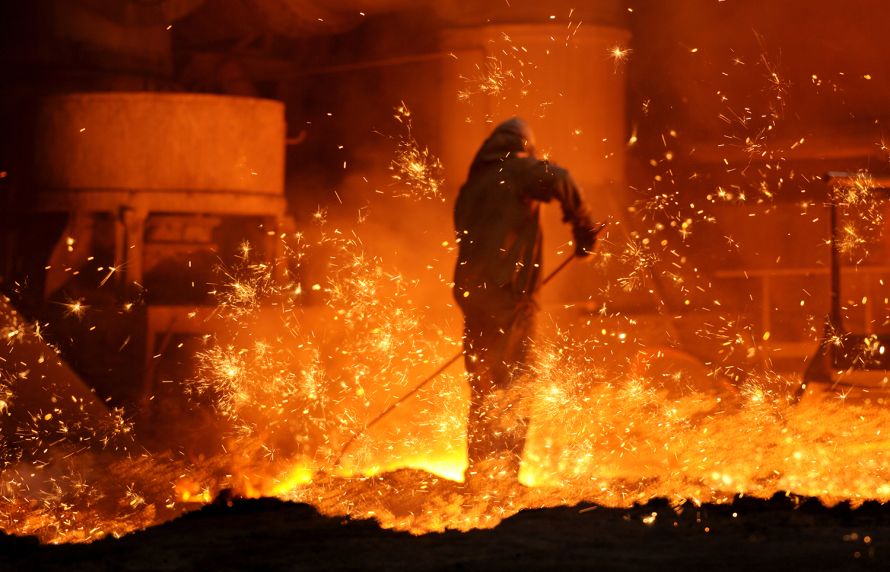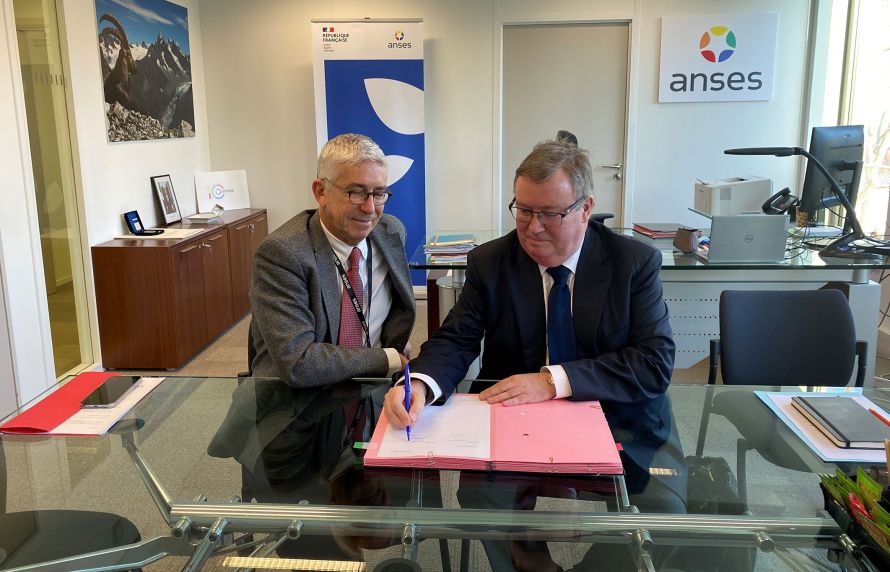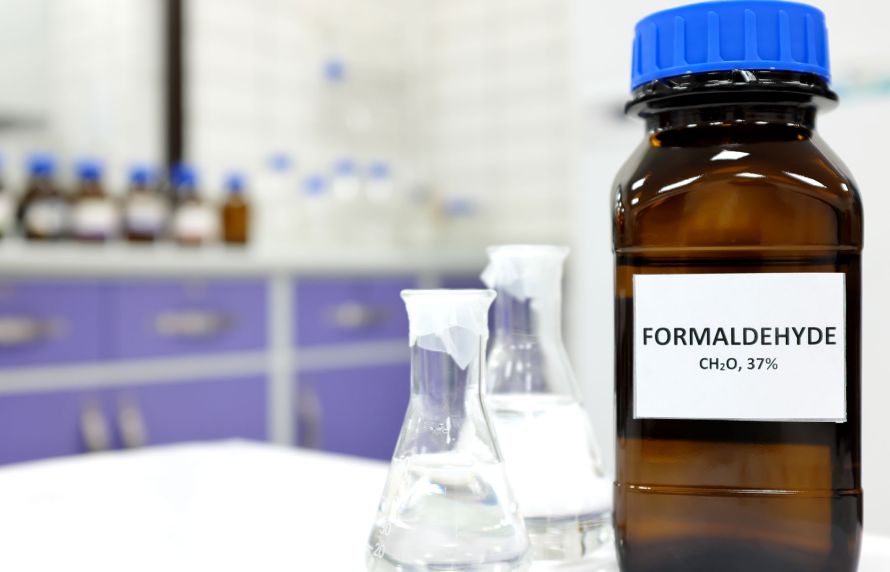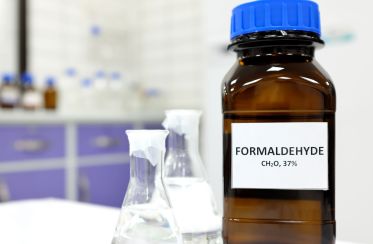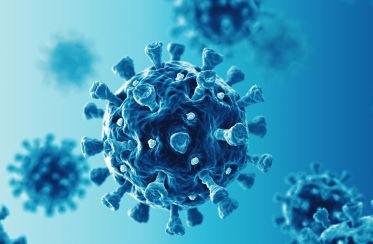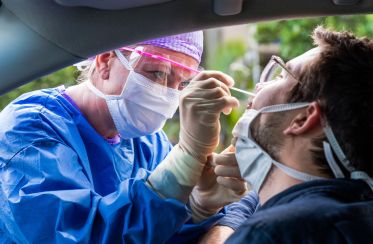What is formaldehyde? Formaldehyde is a chemical compound occurring at room temperature as a colourless and flammable gas. It is often marketed in its liquid form, commonly known as formalin. How does exposure to formaldehyde occur? Formaldehyde is used in many occupational sectors and consumer products. It is a biocidal product used as a disinfectant, fixative and preservative. It is found in DIY and cleaning products, in wall coverings, flooring and furniture panelling and fabrics, plastics and other products. In the general population, exposure can occur through a wide range of formaldehyde sources in indoor air, including from fixtures and fittings, and decorating and household products that release formaldehyde. Formaldehyde is also released by combustion of cigarettes and tobacco products, candles, incense sticks and in open fireplaces and combustion appliances such as gas cookers and paraffin stoves. According to the findings of the 2017 SUMER survey, more than 185,000 workers were exposed to formaldehyde (PDF) (in French) (not counting exposure through formaldehyde-based resins and adhesives). The greatest exposure is in the health sector and in anatomical and cytological pathology laboratories (anatomical pathologists), the funeral industry (embalmers), agriculture, the chemical, food, paper and board, timber and furniture industries and in construction. What are the effects on health? The critical effects of acute or chronic formaldehyde exposure in humans are irritation of the eyes and respiratory tract. Airborne formaldehyde also causes nasopharyngeal cancer in humans, as observed in epidemiological studies of workers exposed to high levels of formaldehyde. How is formaldehyde regulated? Key formaldehyde dates: 2004 : The International Agency for Research on Cancer (IARC) classified formaldehyde as a “carcinogenic to humans” (Group 1) for nasopharyngeal cancer by inhalation. 2006 : The French Ministry of Labour included “work involving exposure to formaldehyde” on the list of carcinogenic substances, preparations and processes, as defined by the Labour Code, in an Order dated July 2006. This became effective on 1 January 2007 and requires the implementation of formaldehyde substitution measures as a priority. 2009 : Nasopharyngeal cancer was recognised as an occupational disease (Table 43 bis on cancerous conditions caused by formaldehyde) when linked to exposure in the workplace for 5 years through tasks such as formalin preparation, formaldehyde use in embalming and anatomical and cytological pathology laboratories, manufacture and use of formaldehyde-based resins and wood flooring varnishes, and fire extinguishing. 2014 : Following ANSES’s classification proposal , formaldehyde was classified as a Category 1B carcinogen and Category 2 mutagen at European level by Commission Regulation (EU) No 605/2014 of 5 June 2014. 2019 : A binding occupational exposure limit was adopted at European level (Directive 2019/983/EC), which was then transposed into French law by Decree No 2020-1546 of 9 December 2020. 2020 : Following an evaluation by the German Government, formaldehyde was approved as a biocidal active substance for product types 2 and 3 for a reduced period of 3 years. Companies marketing disinfectant biocidal products containing formaldehyde were required to apply for a marketing authorisation before 1 February 2022, with supporting arguments demonstrating that the products do not cause human or environmental exposure and why they are essential. What does ANSES’s work on the risks associated with formaldehyde use include? For more than ten years, ANSES has been conducting various expert assessments to evaluate the toxicity of formaldehyde, qualify and reduce human exposure, particularly in the workplace, and evaluate health risks. Assessing the risks for people (general population and workers) After formaldehyde was classified by the IARC in June 2004, the Agency was asked to assess the health risks associated with formaldehyde in indoor, outdoor (PDF) (in French) and occupational environments (PDF) (in French) . The main conclusions of two expert appraisal reports published by ANSES in 2008 were as follows: ranking sources of formaldehyde in indoor environments and evaluating their respective contributions to the exposure of the general population is challenging; the risk of cancer in the general population can be ruled out for both adults and children; the risk of nasopharyngeal cancer in workers cannot be ruled out in a number of occupational sectors with repeated high levels of exposure; the formaldehyde content of products intended for the general public should be reduced, and such products should be labelled with their formaldehyde emission levels. Reducing formaldehyde emissions at source In 2006 and 2009, ANSES proposed a protocol to identify and promote “low-emitting” building materials and decorating products among consumers. This work has been useful for developing French legislation on the labelling of these materials. In 2014, ANSES worked on priority chemicals to support the government in implementing future labelling requirements for volatile contaminants from furniture products (PDF) (in French) . Formaldehyde was identified as one of these priority chemicals for labelling. Regulating the use of formaldehyde In 2011, ANSES drafted and submitted a proposal on behalf of the French Government for a stricter classification of formaldehyde at European level. On the basis of this proposal, formaldehyde was classified as a category 1B carcinogen and a category 2 mutagen. In 2013, ANSES and the RIVM (National Institute for Public Health and the Environment of the Netherlands) jointly took charge of the assessment of formaldehyde under the REACH Regulation. Following this review of occupational risks (PDF) (in French) , ANSES identified health risks for workers in several occupational sectors and recommended the implementation of a risk reduction strategy. In 2017, ANSES examined different options for regulatory control of formaldehyde (PDF) (in French) in order to reduce and manage the risks for workers, and recommended the establishment of a binding occupational exposure limit at European level. Establishing health reference values The Agency develops health reference values for the general population and workers based on toxicity data. These reference values are based on health criteria and aim to protect people from any adverse effects due to exposure to chemicals. In 2017, in the light of new published data, it updated the reference values for formaldehyde, the earliest of which dated from 2007: acute and chronic toxicity reference values (TRVs) by inhalation were set at 123 µg.m-3. TRVs are toxicological indicators used to qualify or quantify the risk to human health associated with exposure to a chemical. They are used by companies and research institutions to demonstrate risk management and by government to establish recommendations on risk management; the indoor air quality guideline (IAQG) was set at 100 µg.m-3 to align it with WHO’s 2010 indoor air guideline. ANSES’s recommended IAQGs are airborne chemical concentration thresholds under which no health impacts or harm are expected in the general population; occupational exposure limits (OELs) were aligned with values set by the 2019 European Directive: an 8h-OEL of 350 µg.m-3 and a 15min-STEL of 700 µg.m-3. ANSES’s recommended OELs are usually airborne chemical concentration levels that workers can breathe during a specified period without experiencing adverse health effects. The concentration levels are determined for a homogeneous exposed population (workers) that excludes children and the elderly. Reducing health risks in the workplace Beyond recommending occupational exposure limits for formaldehyde, which will limit exposure levels in the workplace once introduced at the regulatory level, ANSES received a request from the government in 2014 for guidance on the potential substitution of formaldehyde in five occupational sectors : the feed industry (PDF) (in French) , mainly for formaldehyde treatment of soybean cakes; anatomical and cytological pathology (PDF) (in French) in medical diagnostics; embalming (PDF) (in French) ; the food industry, particularly the manufacture of sugar (PDF) (in French) and alginates (PDF) (in French) ; fish farming (PDF) (in French) . To carry out this work, the Agency developed an overall method for comparing a chemical to its alternatives. Expert appraisals in occupational diseases ANSES is currently conducting expert appraisals on the links between occupational exposure to formaldehyde and leukaemia, including myeloid leukaemia. This work will provide the scientific information needed for discussing any changes to the existing occupational disease tables or recommending new tables.




